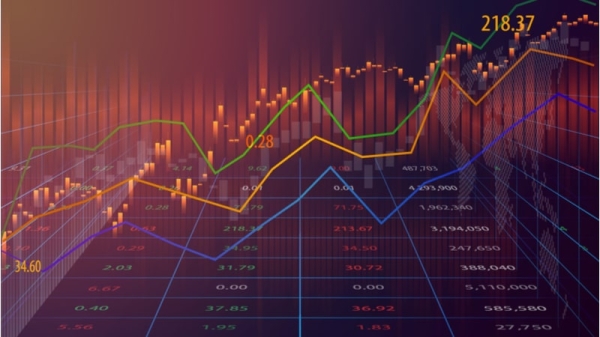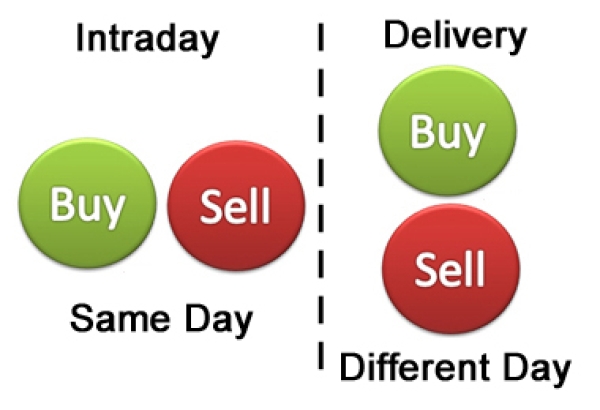What is Intraday Trading - Learn how to do Intraday Trading!
Intraday Trading Indicators Traders often struggle with simultaneous events that occur in intraday trading. Whether one is an experienced trader or a beginner,
- by B2B Desk 2022-06-02 07:18:04
What is Intraday Trading?
Traders base their profits on different types of purposes. One can be a long-term investment that is a gradual process but can generate high returns. The other can be a short-term strategy that involves trading for quick profits. One of these methods is intraday trading.
Intraday Trading Basics:
Intraday trading is the buying and selling of stocks on the same day. This is done through online trading platforms. Suppose someone buys shares for a company, they must explicitly state "Intraday" in the portal of the platform used. This allows the user to buy and sell the same number of shares of the same company on the same day before the market closes. The aim is to make profits from the movement of stock indices. Many also know it as day trading.
The stock market offers you excellent returns if you are a long-term investor. But even in the short term, they can help you make profits. Suppose a stock opens at Rs 500 in the morning. Soon it will go up to Rs 550 in an hour or two. If you bought 1,000 shares in the morning and sold them at Rs 550, you would have made a fantastic profit of Rs 50,000 within a few hours. This is known as intraday trading.
Intraday Trading Indicators
Traders often struggle with simultaneous events that occur in intraday trading. Whether one is an experienced trader or a beginner, following trends and indicators is always beneficial in day trading. Let's look at some indicators:
- Moving Average
Most traders rely on the daily moving average (DMA) of stocks. The moving average is a line on charts that shows a stock's behavior over a period of time. These charts show the opening and closing prices of the stock. The Average Low Line shows the average closing prices for that particular stock over the specified time period, helping you understand price highs and lows and determine stock flow.
- Bollinger Bands
These are bands that show the standard deviation of the action. It consists of three lines: the moving average, the upper limit and the lower limit. If you're looking for trade spotters for a specific stock, they'll help you identify the stock's price movement over a period of time so you can invest your money in the sightings.
- Momentum Oscillators
Stock prices are very volatile. These fluctuations largely depend on market situations. When a trader wants to know whether a stock will go up or down, this is where the momentum oscillator comes in handy. It is presented in a range of 1 to 100 and indicates whether a stock will continue to rise or fall, helping you determine when to buy a particular stock. It shows the right time to trade without letting you miss your opportunities.
- Relative Strength Index (RSI)
It is the indexed form of all transactions that take place in a stock within a given period of time. It ranges from 1 to 100 and graphically shows when a stock is selling or buying higher. The RSI is considered overbought when it is above 70 and oversold below 30. For this calculation he uses a formula, i.e.
RSI = 100 - [100 / (1 + (Average Price Change Up / Average Price Change Down))]

Analysis of Intraday Time
When it comes to intraday trading variations and movements, the most useful tools are the daily charts. These can provide all the necessary trading information with indicators showing the trend of a specific stock over a specific period of time. They transmit the price movement from the start to the close of the market. Time analysis becomes a useful tool for intraday trading as momentum tends to change quickly. You won't be able to understand the charts until the stocks you invest your money in fall or surge sharply. Therefore, it is necessary for day traders to look for charts that will help you better understand the flow; We've covered these concepts in detail, what you should know when investing in day trading.

How to select stocks for intraday trading?
Stock selection is the first and most important step in day trading. After all, the money invested is only worth it if there is something in return, otherwise it's done. So how do you choose stocks wisely? We will see.
- Avoid Volatile Stocks: It's always best to stay away from things that clearly seem volatile. Why invest your money in something you may never get back? Therefore, it is prudent to follow the behaviour of stocks and consider trading potentially stable stocks.
- Correlation of stocks with geopolitical changes: It is preferable to invest in stocks which show a correlation with the main sectors. If the sector index increases, this could also have a positive impact on the share price. For example, a strengthening of the Indian rupee against the Chinese renminbi would hurt the iron ore industry. This would increase export earnings and increase stocks. Choosing stocks given such a market situation would help you a lot.
- Research: Watching, analysing and understanding are the basic steps of trading. Nothing happens without proper calculation, unless you are very lucky when trading. As the odds usually don't work in your favour, it is always necessary to do your research before trading.
- Trends: Sometimes following the pack is better than being a lone wolf. Look for the general market trend or stocks that have generated the most interest from traders. When the market is rising, traders should look for rising stocks; When the market is down, look for stocks that show potential for decline.
Five things to know about intraday trading:
- Commercial Strategy
Day trading is a strategy where you buy and sell your stocks on the same trading day. Traders thus profit from price fluctuations that occur during market hours. If the trader expects the price to rise throughout the day, he will first buy a large number of stocks and then sell them at some point during the day. The reverse can also happen, called short selling. To take advantage of the market decline, traders would short sell. This is when they borrow shares and resell them on the market. Once the price drops as needed, traders buy shares at the lower price and then return them to the lender.
- High Risks
Because day traders essentially exploit volatility, they are exposed to a lot of risk. This is much higher than the risks taken by a long-term oriented equity investor. As a result, day traders tend to be big risk speculators. They usually do high value trades worth thousands of dollars and crores of rupees using margin trading. (Use hedge orders and support orders to take advantage of high Upstox spreads.) However, intraday traders can also make windfall profits.
- Effects on the Share Price
They often influence the development of share prices. For example, a stock is trading in the range of Rs 100-102. Intraday or day traders decide to bet on the stock and 1,000 shares at a time. Therefore, the demand for shares suddenly increases. This leads to a slight price increase. Once it reaches a certain level, traders sell their shares. This in turn drives prices down.
Technical Analysis: Because day traders only care about stock price and volume volatility, these traders rarely consider the financial profitability of the underlying company. They usually use technical analysis. This involves analyzing the stock's historical price and volume trends to forecast its future price. Technical analysis helps determine the right conditions for buying and selling stocks. This usually takes a lot of time and effort. As a result, day traders are often full-time traders, closely monitoring every stock movement.
- This is How Day Trading Works
The first step is to select stocks that have a high trading volume. This means that they are very liquid. This could include penny shares - small company shares costing as little as Rs 20. Pick a maximum of two or three stocks at a time. It would be difficult to monitor further actions. Decide the price at which you want to buy and sell: your entry price and your target price. Most importantly, make sure you have a stop-loss order that acts as a safety net. This will help reduce your risk. Once you place your order, watch closely and exit when the price hits your target or stop loss level.
- Delivery vs. Intraday Trading
When you buy shares cash on delivery, you can do almost anything with them. You can keep it for as long as you like or resell it the next day. It all depends on what you want to do with it. Whenever you feel the market is going up or the stocks you own are worth enough to trade, you can sell them for a profit.
With intraday trading, you have to sell the shares on the same day before the market closes. If you don't do this, there can be two outcomes. Some online platforms automatically convert these stocks into delivery transactions and charge a brokerage fee so you can sell them at a time of your choosing. Others simply settle your trades at the market price during the close time even if you are losing and unfortunately you have to take the losses.
Also Read: 60 WTO members support a new approach to food subsidies

POPULAR POSTS
Rupee Forecast 2025: Key Drivers Behind INR Weakness Against the US Dollar
by Shan, 2025-08-11 07:32:23
August 2025 IPO Preview: Big Listings from JSW Cement, NSDL, Knowledge Realty & SME Stars
by Shan, 2025-07-30 11:51:27
Ola Electric Q1 Results FY26: Revenue Falls 61%, Net Loss at ₹870 Cr - MoveOS 5 in FocusOla
by Shan, 2025-07-14 12:22:55
HAL, BEL & Data Patterns: 3 Defence Stocks Riding India's ₹50,000 Cr Export Ambition
by Shan, 2025-06-26 10:00:16
India GDP Forecast 2025-26 Raised to 6.5% by S&P: Key Drivers & Global Risks Explained
by Shan, 2025-06-26 10:30:46
Dalal Street Outlook: 5 Key Market Triggers to Watch This Week
by Shan, 2025-06-16 12:32:04
What is the Bond Market & How Does It Impact Your Investments?
by B2B Desk, 2025-02-05 09:42:55
RECENTLY PUBLISHED

Loan EMIs to Drop as RBI Slashes Repo Rate - Full MPC December 2025 Highlights
- by Shan, 2025-12-05 11:49:44

Pine Labs IPO 2025: Listing Date, Grey Market Premium, and Expert Outlook
- by Shan, 2025-11-05 09:57:07

The Agentic Revolution: Why Salesforce Is Betting Its Future on AI Agents
- by Shan, 2025-11-05 10:29:23

Top 10 Insurance Companies in India 2026: Life, Health, and General Insurance Leaders Explained
- by Shan, 2025-10-30 10:06:42

OpenAI Offers ChatGPT Go Free in India: What’s Behind This Big AI Giveaway?
- by Shan, 2025-10-28 12:19:11

Best Silver Investment Platforms for 2025: From CFDs to Digital Vaults Explained
- by Shan, 2025-10-23 12:22:46




 Subscribe now
Subscribe now 